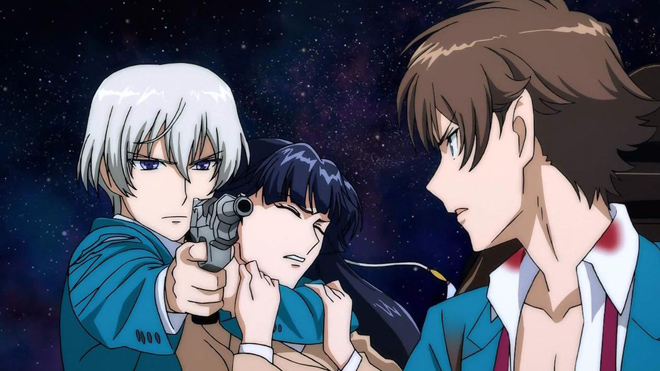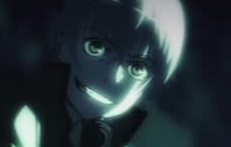Free!- Showing us a few things we haven’t seen before
It was just 2 summers ago that “Free!” splashed onto the anime scene, sharing the airwaves with the very highly regarded “Attack on Titan.” When the preview was first broadcast, almost all the women in the local anime club were discussing it, indicating they were looking forward to it despite acknowledging some of its drawbacks. Also memorable were some internet users’ reactions, saying that this show will ruin anime as it is stereotypically known since it will only appeal to women. After watching one episode, I concluded that some of the predictions of heavy fanservice and provocative language were true, but it didn’t make the series completely unbearable and unwatchable.
My second exposure to it was after a rather boring Saturday at Anime Fusion (which despite it being a local anime convention, is structured more like a gathering of friends), where I decided to just go home and vegetate, not knowing that watching “only one episode” of “Free!” was a bit like saying I’ll only eat one potato chip. The series is not addicting because it’s a technical masterpiece, but there are other reasons to continue watching “Free!” and its sequel “Free! Eternal Summer.”

In the words of a fellow club member, “You can watch the preview and already know what each character is like.” And in fact, that is true, since while the characters do have some creative elements sprinkled in and calling cards which each is known by (each main character has an animal motif along with a name more appropriate to the opposite sex), their personalities are at best an amalgamation of standard tropes and at worst cookie-cutter (the stoic one, the nice one, the cute one, the smart one, the competitive one). In terms of art, simplicity is the motto here with basic, bright colors accentuated with high levels of vibrancy and saturation, though in the first season, more detail work was put into the characters’ upper bodies. There is basic shadowwork put in, but no sense of texturing, with the art not doing much in the sense of immersing the viewer in the environment unless there are sparkles or water fully taking over the scene in question. Instead, the series relies more on music to immerse viewers into the series, especially with the uplifting instrumentals used during the series along with the last episode’s ending, “Ever Blue.” However, kudos must also be given for the ending theme in the first season with the earworm ending theme “Splash Free.” The plot is also simple to comprehend: After four young boys participate in a swimming relay together, the group disbands when main character Rin leaves for Australia, returning years later as a completely changed individual and now rival to his former friends Haruka, Makoto, and Nagisa. The latter trio, along with newcomer Rei, who is not the most conventional swimmer, restart their swimming club at Iwatobi High School.

Not only is the plot simple, but its development and character development are also rather predictable, though thankfully stable and linear thanks to flowing dialogue and smooth transitions between events. The events which keep the plot moving provide the moments of tension, sadness, joy, and pain, and this is where “Free!” cashes out on the attachment it hopes viewers build up towards the characters and provide a larger sense of engagement. Instead of providing extremely complex characters to discuss over a bottle of wine, “Free!” instead attempts to use these relatively basic characters to quickly and easily build a relationship with its viewers, and for the most part, it does succeed. One can feel the impact of these character-building events on some individuals such as Rei and Rin, but the needle doesn’t significantly move for other characters such as Makoto and Haruka until “Eternal Summer.” Nonetheless, the producers did a most excellent job using these events to capture the viewer’s attention and stick with the show due to the points chosen for the episodes’ ending. In fact, this is one of the few shows where the first season’s ending point was properly chosen, gracefully done and deserves merit, as this simple task is often mismanaged in other anime. There is a proper conclusion and an easy segue for the transition into its successor series.

Now, one can just watch “Free!” and then skip “Free! Eternal Summer,” as it can easily stand on its own. It is apparent from the getgo that the target audience for “Eternal Summer” is its predecessor, so if one disliked the original, it is very likely that he or she will dislike its successor. It’s very welcome that the series begins very shortly from where its predecessor leaves off, and it’s not coincidental that the first few minutes are an almost carbon copy of the first few minutes of its predecessor. While there was a bit more of a focus on competitive swimming, the main focal points of the story still are friendship and individual motivation. The character quirks used in the first season such as Rin snapping his goggles on and Haruka stripping at the mere sight of water are focused on much less in the second season, and there seemed to also be less focus on the fanservice, though the opportunities to ship characters continue at the same clip. “Eternal Summer” injects a fair amount of seriousness in around the halfway point, and Haruka gets the development treatment given to Rin in the first season. However, while one can feel the transition points regarding Haruka’s development, these points were a bit clunky and the series could have devoted some more time to delve into his head and smooth things out. Makoto, Rei, and Nagisa also get their character-centric episodes, which do show another side to the characters and covers some new ground, but these new developments could have been utilized a bit more in the latter episodes of the series. Instead, what one must do to get the most out of these characters is develop the few facts which are given and extrapolate from there. But nonetheless, while the characters who were carried over from the first season get fleshed out, the development of the two new characters Momotarou and Sousuke can best be described as flawed. It’s less with Sousuke, since his philosophical conversations with Rin and Haruka fit right into the theme of individuality for the second season, but the transition into his backstory was one of the most jarring and unrefined moments in the series. Furthermore, while his stoic nature will win admirers, his relative lack of screen time combined with the fact he only appears in the second season conspires against the smoothness of his development potential. This is contrasted with Momotarou, a character of extreme comic relief. In fact, all one needs to know about this character is summarized in the first 2 episodes he appears in, and despite being a one-dimensional simpleton, many scenes involving Momotarou will have the audience snickering or in fits of laughter. Otherwise, aspects such as the music, art, and animation carry over from its predecessor series, more or less unchanged, with the exception of the sequel’s twelfth episode. In this episode, one can tell that the background art and scenery are given a huge upgrade compared with what was previously used, with quality easily matching or exceeding the scenes with water or sparkles as the primary element. Another element thankfully carried over from the original is that “Eternal Summer” is given a proper ending, tying up nearly all loose ends and giving a platform to go off of for all of the characters.

So where does this leave “Free!” and “Free! Eternal Summer?” Well, as two separate series or as one larger series, the franchise pulls you in and keeps one engaged not because of how good it is but how it makes one feel. This is a very uplifting series- one about progress, overcoming struggles, and finding purpose in life, though the serious aspects provide the motivation to weave everything together. Judged on its technical aspects, one can say that it doesn’t break new ground and comes off as average or even below average. Mind you, there are flaws here, but “Free!” doesn’t aspire to be a perfectionistic masterpiece. Instead, this is a series meant to be enjoyed in a relaxed mood and to make one feel good. The cries that this is a franchise ruining anime as it is known are just knee-jerk responses and don’t hold any merit at all. Now, there are some who will enjoy it much more than others, and for different reasons, but “Free!” is not as unapproachable as it may first seem and deserves at least a watch.






